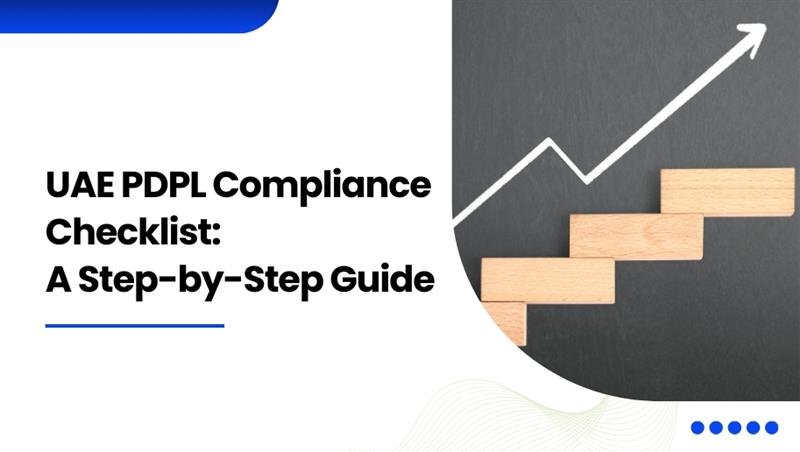
The UAE Personal Data Protection Law (PDPL) regulates that businesses in the UAE treat personal data safely and ethically. Adhering to the PDPL not only keeps companies out of trouble with massive fines but also wins them the trust of customers. This comprehensive checklist guides you through every step to get your business completely in sync with the PDPL.
UAE PDPL Compliance Checklist
1. Understand the UAE PDPL Requirements
The first step towards compliance is understanding the key principles and requirements of the UAE PDPL. The law outlines:
- Lawful processing of personal data
- Purpose limitation
- Data accuracy
- Data minimization
- Storage limitation
- Data subject rights
- Security measures
Familiarize yourself with these principles and how they apply to your business operations.
2. Appoint a Data Protection Officer (DPO)
Under the PDPL, certain businesses must appoint a Data Protection Officer (DPO) if they:
- Process sensitive personal data
- Conduct large-scale data processing
- Make automated decisions
The DPO will be tasked with monitoring data protection policies, providing compliance advice, and serving as a contact point for data subjects and regulators.
3. Perform Data Mapping and Inventory
Determine what personal data your company gathers, processes, and stores. Develop a data inventory that contains:
- Data categories (e.g., names, contact information, payment details)
- Data sources
- Processing purposes
- Data retention periods
- Data sharing with third parties
This allows you to know your data flow and determine areas of compliance deficiencies.
4. Determine Legal Basis for Data Processing
PDPL demands businesses to obtain a valid basis for processing personal data. The legal bases are:
- Consent
- Contractual necessity
- Legal obligations
- Legitimate interests
- Protection of vital interests
Ensure your data processing activity supports one of these legal bases and keep track of your reasons.
5. Review and Update Privacy Policies
Your privacy policies must clearly state how your business gathers, processes, and protects personal information. Essential information to mention:
- Types of information gathered
- Reasons for processing data
- Legal basis for processing
- Rights of data subjects
- Retention periods for data
- Data sharing with third parties
- Security practices
Ensure that your privacy policies are easily available to customers and drafted in plain, transparent language.
6. Get Valid Consent
In case your data processing relies on consent, ensure that consent is:
- Given freely
- Specific
- Informed
- Unambiguous
Use consent management tools to get, store, and handle user consent efficiently. Provide ways for users to withdraw their consent at any moment.
7. Use Data Subject Rights Processes
The UAE PDPL provides individuals various rights regarding their personal data, such as:
- Right of access
- Right of rectification
- Right of erasure
- Right to object
- Right of data portability
Put processes in place to process data subject requests within the necessary time frames.
8. Data Protection Impact Assessments (DPIAs)
Perform Data Protection Impact Assessments (DPIAs) of high-risk processing activities. Your DPIA should:
- Explain the processing activity
- Evaluate necessity and proportionality
- Identify data subject risks
- Detail mitigation measures
Set down your DPIA results and update them at regular intervals.
9. Implement Security Measures
Secure personal data by using relevant technical and organisational security controls, including:
- Data encryption
- Access controls
- Regular security auditing
- Data breach detection systems
- Employee training
Create an incident response plan for managing data breaches effectively.
10. Safeguards for Data Transfer
If your company transfers personal data outside the UAE, make sure the destination country has sufficient data protection. Put in place safeguards like:
- Standard contractual clauses
- Binding corporate rules
- Clear consent from data subjects
11. Vendor and Third-Party Management
Check vendor and third-party contracts that process personal data on your behalf. Make sure they meet PDPL requirements and contain:
- Data processing agreements
- Security obligations
- Data breach notification procedures
Perform periodic audits of third-party vendors to confirm compliance.
12. Data Retention and Deletion Policies
Establish clear data retention policies to prevent personal data from being stored for longer than required. Enforce secure data deletion processes for:
- Personal data no longer needed
- Data subject erasure requests
- Expired data retention periods
13. Employee Training and Awareness
Train employees on data protection principles and their responsibility to maintain compliance. Conduct regular training sessions on:
- Data protection policies
- Processing data subject requests
- Identification of data breaches
- Safe handling practices for data
14. Management of Data Breach
Have a data breach incident response plan that includes:
- Identification and isolation of the breach
- Impact assessment
- Notification to the affected parties
- Reporting the breach to the authorities
Keep thorough records of all data breaches and remedial actions taken.
15. Monitoring Compliance Continuously
Compliance is a continuous process. Review and revise your data protection policies, processes, and technologies regularly. Perform periodic audits to determine and fill any gaps in compliance.
Conclusion
UAE PDPL compliance can only be achieved with a holistic data protection approach. Adhering to this step-by-step checklist will help ensure businesses comply with legal requirements, safeguard customer information, and sustain trust. Treat data protection as a fundamental business practice to lead the way against regulatory updates and improve your standing in the UAE market.